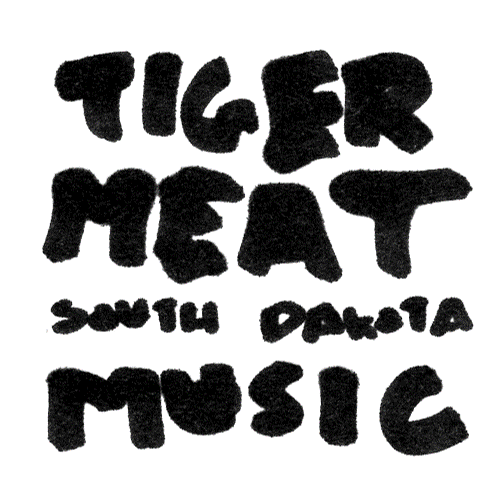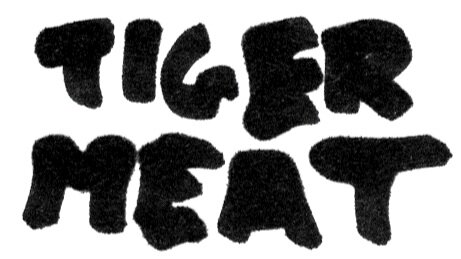Luis Víquez
El Ruido del Agua /
Observations On...
2022 & 2023 | Classical
— haiku by Seira Matsuoka (English translation)
Luis Víquez: Back in November, my wife and I traveled to Las Vegas to be at the Latin Grammy Gala. It was just really cool, because everybody that was involved in the album [El Ruido del Agua by Eddie Mora] got nominated, which means that 50-plus students that were members of the University of South Dakota Symphony Orchestra, they can put on their resume line, "Hey, I participated in a Latin Grammy-nominated recording." That's is very cool for the students. 2022 has been a very good year for the [USD] orchestra as well, because we won second place in the American Prize in orchestral performance, which was cool, because the University of Washington Symphony Orchestra, which is a very massive orchestral program, top notch, they were third place, and we are second place.
We are in an area in the country that is isolated. I mean, students in Sioux Falls or in Minneapolis will have private lessons, and be able to go to Youth Symphony. For many of our students, their first applied lesson in violin is with the professor here, the first applied clarinet lesson is with me, so it's very amazing for the students to be involved in this type of project. [The title track of the album is] called "El Ruido del Agua" because when [composer] Eddie Mora visited USD, I took him to go see the Missouri River, so he was very inspired by the bodies of water that he got to see here in South Dakota. The title comes from an old haiku, it translates into "the noise of the water."
//\\//\\//
My music journey started when I was eight years old. Costa Rica, being a predominantly Catholic country, there is a lot of outdoor processions for whatever festivity, like holy week and those things. Well, they will have a town band, it's not like a marching band, it will be like a municipal band, but a very, very small band, a community band. So that's where I started. I was given a fingering chart, and I was given an instrument, and one of the older clarinetists of the band, he taught me how to make sound on the clarinet, but basically, it was all like, “figure it out by yourself.” So I did that for four years. And then after that, when I was 12, I got a scholarship to go to an afterschool program, like a school of the arts. So I would go to high school and then in the evenings, I would go to receive music training, music theory, music history, orchestra, applied lessons and whatnot. So that's what I did when I was 12. At that school of music, which is in Cartago, one of the major cities in Costa Rica, they needed somebody to start beginners on clarinet. So, I mean, I've been in this teaching business ever since I am 15 years old. So anyways, after that, I went to the University of Costa Rica, got my undergrad in clarinet performance. After my undergrad, I worked at another school of the arts as director of bands for about four years. And I was also playing as principal clarinetist of the Heredia Symphony, which is one of the major orchestras in Costa Rica, Then I came to the US, got my master's degree in clarinet performance, but I also decided to study wind band conducting, because that was my job in Costa Rica. Then I wanted to get a doctorate, but marching band is not my thing, and if you get a doctorate in wind conducting, you kind of have to know marching band. So I decided to go into orchestral conducting because I just love working with the strings, and love the repertoire. Got into my doctorate, and [in 2016] as I was finishing my second year [at the University of Missouri - Kansas City], one of my professors at the conservatory, they said "Look, Luis, look! They're looking for somebody to do clarinet and to do orchestra in a small town in South Dakota. It's a full time faculty job. You should apply." So I applied, and here I am [in Vermillion at the University of South Dakota] seven years later talking to you.
//\\//\\//
Eddie Mora is a former professor of mine at the University of Costa Rica. He conducts the orchestra in which I used to work. So I developed a friendship with him. Eddie came [to USD], he guest conducted the orchestra, and we premiered one of his pieces. So he knew what our students were capable of. Then in 2019, we had the opportunity to get some funding to do a recording project, so I thought, "Well, what if I use those resources to ask [Eddie Mora] for a brand new work that will be approachable for my students, that we could premiere and have a recording?"
So we recorded the piece ["El Ruido del Agua"]. It was a very interesting experience because me as a conductor, I'd never had a recording session before. I had no idea of how intense that could be, being on the podium and trying to get it right. We did the recording, we edited the track, I sent it to [Mora], and then he asked me about two years later, "Luis, I would like to put together an album, and I would like the album to have the same title, El Ruido del Agua." The exact same title of the piece that he wrote for us. So he put it together in an album. The producer of the album entered the album in the Latin Grammy Academy for consideration, and we got the very big surprise — based on what he told me, there were about 130 albums submitted for Best Classical Music Album, and we were one of the five nominated albums. We didn't win the Grammy, but we were selected among the top five albums for that year. I also got to record as a clarinetist on that album, I played the clarinet on one of the tracks [“La Culebra Tiene los Ojos de Vidrio”]. The cool part of this album is that it's all music by Eddie Mora but all the pieces have been recorded by multiple artists: There are some solo artists from Costa Rica, there is a professional wind ensemble from San Jose, and even the Chicago Clarinet Trio.
//\\//\\//
After "El Ruido del Agua," we were very motivated about recording. So with the very small budget that I have per year, I decided instead of using that money for buying music, or for printing fancy programs, or printing fancy posters, we decided not to do any of that thing. I would create my own posters, I will print music out from IMSLP [a database of public domain sheet music], so we could use that money to have one recording session per year. So in two hours, we will record two pieces. And we were very lucky, back in those days, Scott Faragher [from Earsay Recordings in Sioux Falls] he came here and he recorded us. I don't know if you heard that he closed the studio, Earsay. Very unfortunate. He was very great for recording classical music.
[The album Observations On…] was a project that took about three years. For this album in particular, every single piece, except for the first one, was written and dedicated to the USD Symphony. The first piece in the album is the “Suite de Ballet.” It's by Costa Rican and Mexican composer Rocío Sanz Quirós. It was very special for us to record that piece, because the music historical archive at the University of Costa Rica, they did a brand new, critical edition of the piece. So when I was in Costa Rica for vacation, I was called to the university and they said, "Luis, can we give you a copy of the set of parts and the new full score and everything?" So I received that, and I said, "What if I record these with my orchestra?" [Rocío Sanz Quirós] lived in Costa Rica for many years and moved to Mexico because nobody was playing her music in Costa Rica. After she died [in 1993], “Suite de Ballet” got performed about three times in Costa Rica. But if you hear some of the live recordings of that piece, they did not do justice to that piece: wrong tempos, wrong articulations, basically under-rehearsed. So I took that semester, and I said, "You know what, I'm going to do a very diligent work on score studying.” And I asked permission in Costa Rica, I said, "Hey, can I record this? And they said, "Please. Please record it." So many conductors in Costa Rica, they could have had the opportunity, and the resources, and the money to record that piece. But nobody wanted. Probably because she was a woman, probably because she wrote new music in a very new language. So it was here in South Dakota, where we created a recording of that piece.
The piece by Deanna Wehrspann ["Mourning Dove"], which is for solo piano and strings, was written for us. "Observation Song," that one was written by Steven Landis for us. "Resonating Loudly" was written for us by Dr. Stephen Yarbrough, which is a South Dakota composer. The piece "Sequoia" is by my friend, Andrés Soto. As I have been working with the composers, I asked them to write something that would be enjoyable and approachable by the large diversity of students that we have here. I don't see that it is worth it to play a very difficult piece that may get recorded once, but then people won't be able to play it again. A piece like "Sequoia," that's a piece that a youth orchestra can be doing, an all-state orchestra. I know that many other college orchestra professors are looking into doing it, so we wanted to provide a high quality recording to motivate people to do this type of repertoire. So, yes, it's new music, it's something written for us. We are actually finding our own voice in the orchestral realm by providing recordings of music by underrepresented composers, Latin American composers. Yeah, we're not doing Mozart, Beethoven, or Haydn, but who cares?
LUIS VÍQUEZ’S ESSENTIAL SOUTH DAKOTA ALBUMS
Paul Lombardi — Pieces for Clarinet and Other Instruments (2022)
Stephen Yarbrough — Alleluias for Orchestra (2007)
Creekside Singers/SD Symphony Orchestra — Lakota Music Project (2022)
SOURCES
Víquez, Luis. Interview. By Jon Bakken. 2 February 2023.







